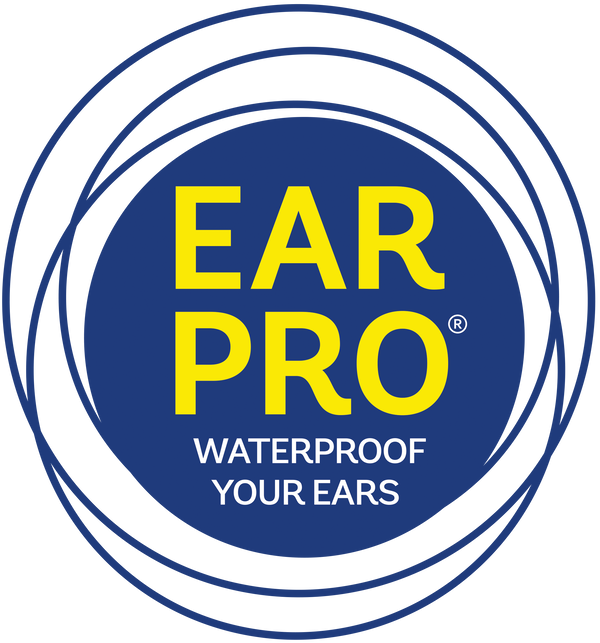
Why Seniors Are Choosing Ear Pro Over Traditional Earplugs
Share
Pool mornings and seaside holidays often come with an unwelcome side-effect for older adults: painful ear infections and muffled hearing aids.
The best ear protection for senior swimmers prioritizes comfort, safety, and compatibility with hearing aids.
Ear Pro’s mineral-oil barrier offers exactly that, without the hassle of foam plugs that never quite fit.
Table of Contents
1. Understanding the Risks of Water Exposure for Hearing Aid Users
2. Selecting Water-Resistant Hearing Aids
3. Utilizing Protective Accessories for Moisture Prevention
4. Best Practices for Swimming and Water Activities
5. Post-Exposure Care and Maintenance Tips
6. Conclusion
7. Frequently Asked Questions
Understanding the Risks of Water Exposure for Hearing Aid Users
Water may seem harmless, yet it poses three distinct threats to older ears and sensitive hearing technology.
Increased Susceptibility to Ear Canal Infections
Age-related changes shrink the ear canal’s self-cleaning ability, letting water trap bacteria.
The reduced natural defenses in seniors underscore the critical need for proactive ear infection prevention during swimming.
Moisture Damage to Hearing Aids
Tiny microphones and receivers dislike humidity. Once droplets seep in, corrosion follows, forcing costly repairs.
Using the best ear protection for seniors who swim keeps electronics dry and functional.
Age-Related Ear Canal Changes
Thinner skin and limited wax production heighten irritation. Ear Pro coats the canal with a breathable layer of mineral oil, delivering natural ear protection in seconds.
Selecting Water-Resistant Hearing Aids
Not all hearing aids are built for pool days; here’s how to spot models that shrug off moisture.
Key IP Ratings to Look For
When selecting hearing aids for seniors who swim and intend to wear them close to or in the water, it's crucial to prioritize models with a high Ingress Protection (IP) rating.
Seniors who intend to swim with their hearing aids should prioritize models with an IP68 or higher rating, is crucial to ensure the devices can withstand the aquatic environment, minimizing the risk of water damage and maintaining their functionality.
To maximize protection, especially during more active swimming, combine these splash-resistant earplugs with the best available ear protection for seniors who swim for enhanced double security.
Built-In Nano-Coatings and Seals
Modern aids feature hydrophobic seals, yet prolonged laps test their limits. Complement coatings with Ear Pro, one of today’s most popular waterproof ear sprays for seniors.
Utilizing Protective Accessories for Moisture Prevention
Beyond the device itself, a few clever accessories keep every drop away.
Ear Pro Mineral-Oil Barrier Spray Explained
A single puff forms an ultrathin shield that repels microbes and chlorine. Ear Pro’s formula contains only pharmaceutical-grade minerals and oregano oils, making it a standout among chemical-free ear protection options and suitable even as a safe ear spray for children.
Swim Caps, Headbands, and Seals
Silicone caps block surface splashes, while custom headbands add compression. To minimize leaks and irritation, pair appropriate tools with the best ear protection designed for seniors who swim.
Comparing Ingredients and Safety
Many sprays rely on alcohol that stings delicate skin. Ear Pro is different, offering transparency through comprehensive ingredients analysis and earning praise for being part of the growing market for organic ear care products.
Best Practices for Swimming and Water Activities
Smart habits in the pool amplify the protection Ear Pro delivers.
Pre-Swim Preparation Routine
Apply Ear Pro 15 minutes before diving in. This simple habit solidifies its reputation as the best ear protection for senior swimmers and aligns with broader swimmer's ear prevention methods recommended by ENTs.
Safe Swimming Techniques for Seniors
Keep ears above water when practicing breath control, avoid chronic head-under strokes if infections recur, and rinse with clean water immediately afterward.
Choosing eco-friendly ear care options avoids introducing wasteful disposable plugs into the environment.
Post-Exposure Care and Maintenance Tips
Proper after-swim care preserves both ear health and hearing-aid performance.
Gentle Drying and Cleaning Steps
After leaving the pool, tilt your head, let excess water run out, then pat dry with a soft towel.
Don't compromise; reapply Ear Pro if you plan another swim to preserve the best possible ear protection for senior swimmers.
Daily Hearing Aid Maintenance Checklist
-
Open battery doors overnight for ventilation
-
Wipe shells with lint-free cloths
-
Store the aid in a dehumidifier cup
Following these steps extends device life and pairs perfectly with non-toxic ear protection alternatives like Ear Pro.
Conclusion
Traditional plugs fail to address seniors’ unique mix of fragile ear canals and high-tech hearing aids.
The lightweight, invisible, and irritation-free mineral-oil shield of Ear Pro ensures the best ear protection for seniors who swim, all while promoting comfort, hygiene, and environmental responsibility.
Ready to keep water where it belongs? Visit the Ear Pro product page and make every swim carefree.
Frequently Asked Questions
1. What makes Ear Pro suitable for seniors?
Ear Pro creates a gentle mineral-oil barrier that repels water, reduces bacterial growth, and never expands or irritates aging ear canals, so older swimmers stay comfortable while keeping hearing aids dry.
2. Are traditional earplugs less effective for older adults?
Foam or silicone plugs need a snug seal that sensitive senior ears may not tolerate; they can also trap residual moisture and raise infection risk.
3. How does Ear Pro compare to other ear protection methods?
Instead of blocking the canal, Ear Pro forms an invisible hydrophobic layer that keeps water out while letting sound in, preserving situational awareness and device performance.
4. Is Ear Pro safe for daily use by seniors?
Yes. Its pharmaceutical-grade mineral and oregano oils are alcohol-free and non-toxic, making daily application safe and irritation-free for mature skin.

